#bakumatsu shinsengumi
Photo

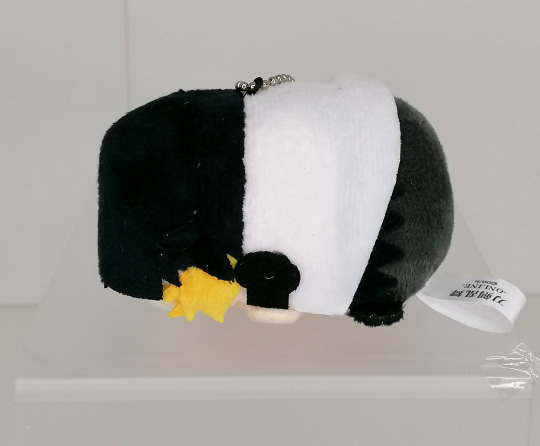

Touken Ranbu ONLINE: Nagasone Kotetsu - Mochi Mochi Mascot Vol.5
Size:10 cm
Price: 12€/17 USD
(Shipping price not included)
Units Available: 1
(Send us a message or comment if you’re interested!!)
#Touken Ranbu#Touken Ranbu ONLINE#Nagasone Kotetsu#tkrb#touken ranbu hanamaru#katsugeki touken ranbu#touken danshi#刀剣乱舞#nagasone#長曽祢虎徹#tourabu#Hanamaru#刀剣乱舞online#とうらぶ#刀剣男士#shinsengumi#bakumatsu shinsengumi#kotetsu#ikemen#danshi#anime#anime merch#mobile games#Mobile game#otome#otome game#otome games#oneeesanmarket#all products#plushies
10 notes
·
View notes
Text
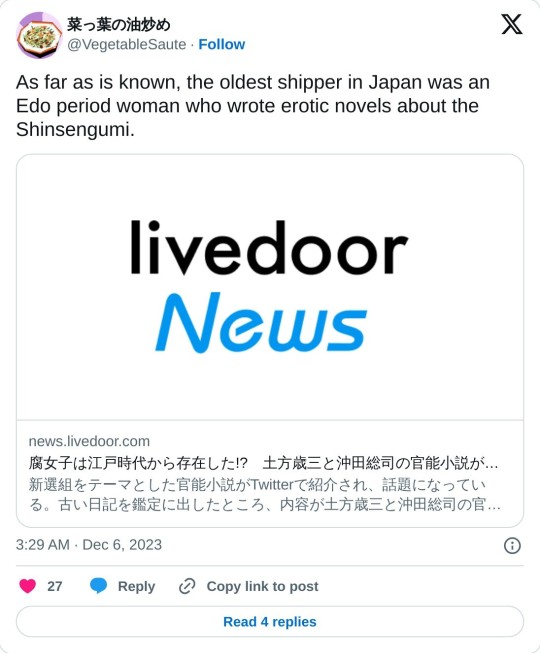
155 notes
·
View notes
Text
I think I finally realized where the Kiwami Ishin cover comes from


I was watching the 90's action romp with Antonio Banderas and I realized the poster looked VERY familiar. Feel free to correct me if the inspiration came from somewhere else though. Nevertheless, image goes very hard.
#yakuza#yakuza ishin#ryu ga gotoku#sakamoto ryouma#bakumatsu#shinsengumi#wild west#mariachi#antonio banderas#desperado#kiryu kazuma#revolver#flintlock#samurai
16 notes
·
View notes
Photo
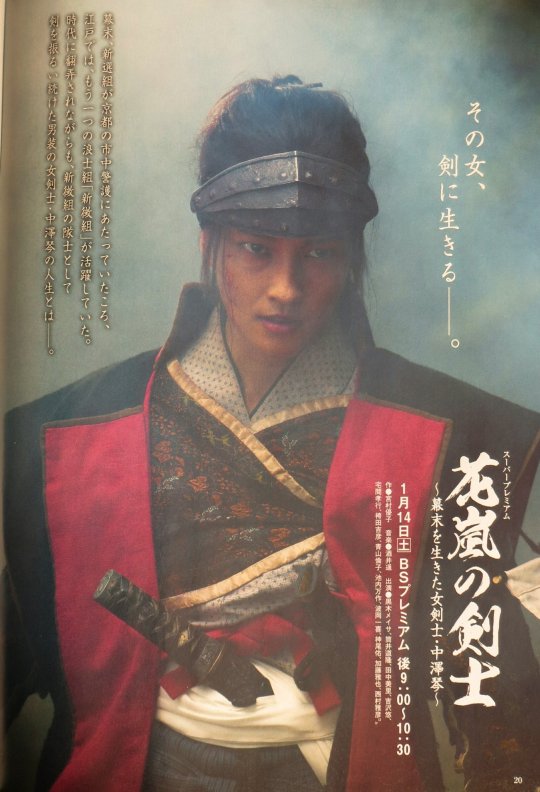
Meisa Kuroki as Koto Nakazawa in the Taiga Drama, The Swordswoman (2017) by ashs62
#meisa kuroki#kuroki meisa#koto nakazawa#nakazawa koto#taiga drama#historical drama#period drama#the beautiful swordswoman#Bakumatsu wo Ikita Onna Kenshi Nakazawa Koto#onna bugeisha#female samurai#japan#samurai#shinsengumi
29 notes
·
View notes
Text
not enough people talk about how change is what haunts the narrative in hakuouki
#hakuouki.#i just finished playing through saito's route the other day#and it struck me that once you finish toshi's route and have a better understanding of what is coming in the other routes storywise#that it's at that point that you're more aware of the change haunting the narrative#change being the upheaval of the bakumatsu period#moving from kyoto to edo#change between being human and being a fury#people dying around you and the shinsengumi roster changing as the story goes on#it just hangs over every route and there's nothing you can do to stop it from happening#it's like hurtling toward disaster knowing it's inevitable and horrible#it's so good and beautifully done
15 notes
·
View notes
Photo

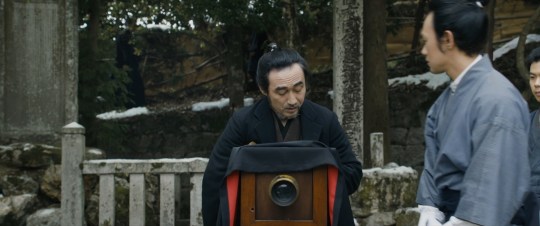
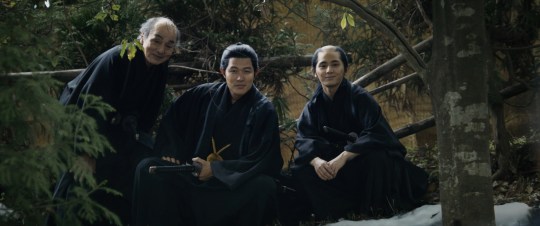
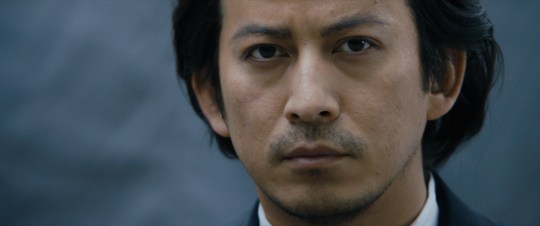
Please hold still for six seconds
#baragaki#okada junichi#suzuki ryohei#hijikata toshizo#kondo isami#okita souji#shinsengumi#stills#jmovies#bakumatsu period
28 notes
·
View notes
Text
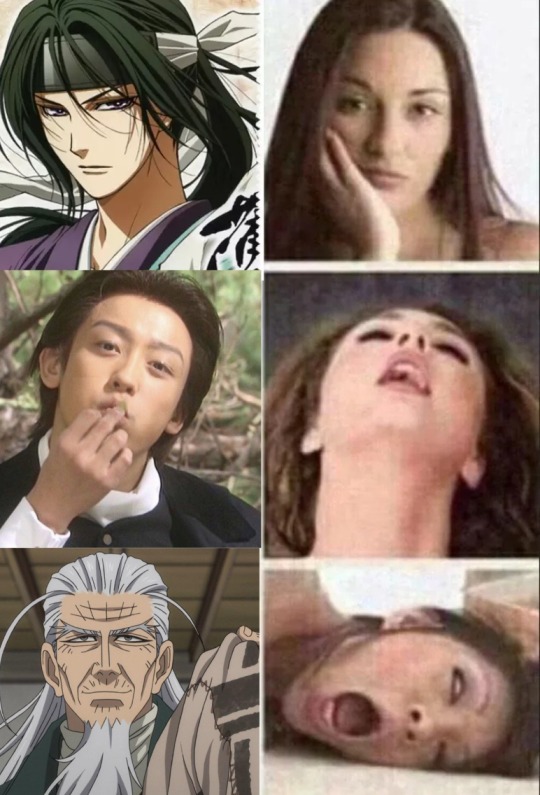
2 notes
·
View notes
Note
Hi, are there any other records/stories/anecdotes of Shinsengumi members clashing with any of the three “Man-cutters?” The only ones I know so far was an anecdote from Juro Abe attacked both Okada Izo and Abe himself for being tools to kill people and one from an interview from Gensai’s grandson, Kawakami Toshiharu, where Kondo Isami would avoid him when they met. Thanks.
The Asks I get on tumblr definitely keep me on my toes, and this one took a couple of days to answer because I needed to do some checking of sources first.
I may not be so much of a fount of knowledge as I am a bucket of random trivia and a puddle of "I know where to find that", so occasionally I have to dig a little deeper for a useful answer. (And hopefully this is a useful answer...)
As always, if anyone has additional information or finds an error, please comment or reblog!
--
A quick timeline:
In 1862, Kyoto saw a lot of upheaval, both politically and with ronin from various domains. It was also in this year that many of the tenchu (divine punishment) assassinations were carried out.
On 10 April 1863, the Roshigumi arrived in the city.
Although the group wasn't there to police the city and didn't last long because of Kyokawa Hachiro's false pretenses in assembling it, the members who chose to remain in the city formed the Mibu Roshigumi, which in August 1863 became the Shinsengumi.
The Shinsengumi were under the command of Matsudaira Katamori of Aizu, who was the military commissioner for Kyoto, and their purpose became patrolling the streets and restoring order.
The Shinsengumi left Kyoto in January 1868.
Therefore: any interactions between the Hitokiri and the Mibu Roshi / Shinsengumi in Kyoto take place between early 1863 and January 1868.
--
Okada Izo
Okada Izo left Kyoto in January 1863 and came to Edo, where he was initially living with Takasugi Shinsaku. After Takasugi was recalled to Choshu, Izo became Katsu Kaishu's bodyguard until he left (for reasons unknown) and returned to Kyoto. I don't know when exactly he returned to Kyoto, but it seems to have been fall or winter 1863.
After hiding himself in the city for a while, he was arrested for burglary in May 1864 by the Kyoto magistracy, jailed, and then banished from the city and returned to Tosa.
Although Ryomaden shows Izo being hunted by members of the Shinsengumi, I haven't seen anything in available historical records to suggest the Shinsengumi and Okada Izo ever crossed paths, at least not where they would have recognized him.
And while we don't know a lot about Izo's time in hiding, we do know that he was using an alias (Tetsuzo) and had sold at least his long sword, perhaps even both swords, to make ends meet. As such, he was unlikely to put himself into situations where he would have encountered the Shinsengumi.
The record of Abe Juro speaking about Okada Izo appears to be from the late Meiji era. In his statements, he compares Okada Izo to Okita Soji and Oishi Kuwajiro of the Shinsengumi, stating that all three were people without ideological convictions who were being used as tools to kill.
I have not read anything that would suggest Abe ever met Okada Izo, but he did know both Okita and Oishi personally because he used to be a member of the Shinsengumi until he left with Ito Kashitaro's group. It is possible he was using later knowledge gained by hearing or reading about Okada Izo to make this statement to disparage Okita and Oishi, and I'm inclined to think of it that way because there don't appear to be other records of Abe speaking about Izo.
---
Kawakami Gensai
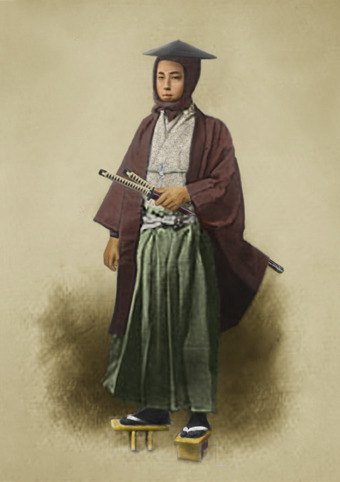
Kawakami Gensai was in Kyoto until late September or early October 1863. He left the city shortly after the Bunkyu Coup (also known as the Coup of 18 August), which took place on 29 / 30 September 1863 (western calendar).
He returned after July 1864 to seek revenge for the death of his mentor, Miyabe Teizo, who was killed when the Shinsengumi raided the Ikeda-ya on 8 July 1864. However, I haven't found any evidence that Gensai and the Shinsengumi had direct interactions, let alone crossed swords.
Gensai was said to have carried out many assassinations, but the only one attributed to him with certainty was that of Sakuma Shozan on 12 August 1864. (As an aside here, Sakuma Shozan was Katsu Kaishu's brother-in-law. He was married to Kaishu's younger sister, Junko.)
There is the claim that "even Kondo Isami would avoid him if they passed each other in the street." The only source for it appears to be Kawakami Gensai's grandson, Kawakami Toshiharu, and there's no way to tell whether he was sharing family lore, or whether he was trying to use his grandfather's name for political gain. (Toshiharu was active with Dai Nihon Seisanto, a nationalist-fascist political organization, in the 1930s.)
If Gensai was out for revenge against the Shinsengumi, you'd think he wouldn't simply allow Kondo Isami to "avoid him" in the street; he'd try to find a way to attack him.
I will eventually write about Gensai separately, I think, but here's a bit of an aside: He was very small in stature, just about 5ft tall (150cm), and fair-skinned. Apparently people commonly "thought at first glance that he was a woman dressed as a man." He was married and had a son (Gentaro), and he was described as soft-spoken and gentle with his family.
---
Tanaka Shinbei
Tanaka Shinbei was active in tenchu assassinations in the Kyoto area from August 1862 until July 1863, occasionally working together with Okada Izo, notably in the assassination of Honma Seiichiro.
The reason Shinbei and Izo worked together was that they both took orders from Takechi Hanpeita. Takechi and Shinbei had a much closer relationship than Takechi and Izo: they had become sworn brothers in August 1862.
On 5 July 1863, Tanaka Shinbei apparently assassinated the court noble, Anegakoji Kintomo. I'm saying "apparently" because he never made a confession. His arrest was based on the fact that his sword, which he claims had been stolen two days prior, was found at the scene.
Immediately after the assassination, Bojo Toshikatsu demanded Aizu arrest Tanaka Shinbei. Matsudaira Katamori then dispatched Ando Kyuzaemon (whose name I am hopefully reading correctly) to take several officials and some troops to make the arrest.
The sources I have don't specify whether the troops were Aizu's own or whether Matsudaira Katamori sent Ando and the officials to accompany the Shinsengumi to make the arrest. I've seen various discussions about this online but no concrete answer, so it may or may not have been the Shinsengumi that arrested Shinbei.
At any rate, Shinbei was arrested and because Aizu did not have its own prison in which to hold him, he was handed over to the Kyoto magistrate. During the interrogation, Shinbei asked to see the sword that had been found at the scene, and when it was handed to him, he used it to kill himself. (Outstanding police work, gentlemen. Why would you hand him the sword? *facepalm*)
---
Nakamura Hanjiro

Nakamura Hanjiro arrived in Kyoto in spring 1862 alongside a large group of Satsuma samurai who were accompanying Shimazu Hisamitsu, the domain's regent and father of the current (but still under-age) daimyo, to Satsuma's residence in the city.
After the Terada-ya incident of 29 May 1862, during which some of his acquaintances had been killed and/or injured, Hanjiro became closely involved with the Sonno-Joi movement in Kyoto. As Saigo Takamori put it in a letter: "He associates with Sonno-Joi ruffians and visits the residence of the Choshu domain."
Even though Hanjiro's name is included in the list of hitokiri, like Kawakami Gensai there is only one assassination ascribed to him with any certainty, that of Akamatsu Kosaburo.
Akamatsu was a scholar and disciple of Katsu Kaishu who was suspected of being a shogunate spy. On 30 September 1867, Hanjiro killed him in broad daylight with a single stroke of his sword, which was verified by Arima Tota, who was present, and by an entry in Hanjiro's diary.
Hanjiro is perhaps the only person in the list of hitokiri for whom we can find an actual connection with the Shinsengumi, although it seems that he never had opportunity to cross swords with them.
Hanjiro knew - if not personally, then through other people - Ito Kashitaro and the former Shinsengumi members who had formed Goryo-Eji because Ito was meeting with individuals from Satsuma.
When Ito was assassinated by the Shinsengumi on 14 April 1867, Hanjiro was involved in helping former Goryo-Eji members hide at Satsuma's Kyoto residence.
Just as Hanjiro knew about the Shinsengumi, the Shinsengumi were aware of him due to his involvement in the Sonno-Joi movement in the city. He was likely on their list of "people to watch out for" and they would have been aware of his skill as a practitioner of Jigen-ryu swordsmanship.
There is at least one source quoting Kondo Isami as having warned members of the Shinsengumi: "Don't deal with Nakamura Hanjiro of Satsuma alone!" In other words, if you do encounter him during a raid, your swordsmanship would be no match for him. (As a reminder, a high level of swordsmanship was not a requirement for joining the Shinsengumi!)
And while Hanjiro may not have known Kondo Isami personally, he obviously had a lot of respect for him as a samurai. Arima Tota, who was a close friend of Hanjiro, was Satsuma's vice-chief of staff who arrested Kondo on 28 April 1868. When Hanjiro learned from Arima Tota that Kondo had been beheaded instead of being allowed to commit seppuku, he was said to have been very angry.
Hanjiro is another person who will eventually get his own post, but here's a bit of an aside: After the Kinmon incident, a large part of Kyoto burned to the ground and many people were left homeless. Hanjiro's friends noticed he would leave with two rice balls in his sleeve everyday and wondered where he was going. When they followed him, they found that he was handing the food to people who had been displaced by the fire.
...
Lastly, there's one more man who was known as Hitokiri:
Hitokiri Kuwajiro, who was Oishi Kuwajiro of the Shinsengumi. He got this name because he was sent on assassination missions, most notably that of Ito Kashitaro, for which he was tried and beheaded in 1870. He was also (falsely) accused of the assassination of Sakamoto Ryoma.
...
(Edited on 3/17 because once again the most surefire way to locate typos is to read your post again a week after posting it ...)
#history notes#historical notes#history reference#historical reference#history research#historical research#hitokiri#manslayers of the bakumatsu#hitokiri and shinsengumi#shinsengumi#ask#answered ask
21 notes
·
View notes
Text
#fgo#fate grand order#hijikata toshizou#yamanami keisuke#saitou hajime#okita souji#shinsengumi#bakumatsu#animatic#fgo fanart
43 notes
·
View notes
Photo
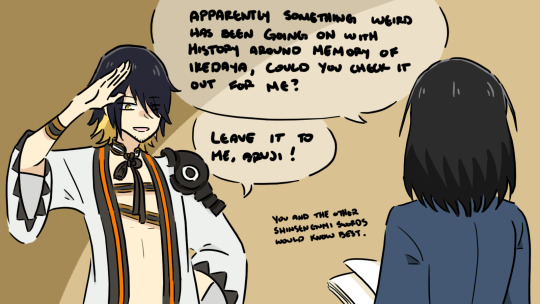



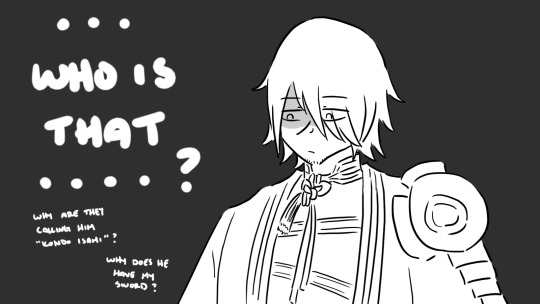
Upon hearing the report, Saniwa immediately rushed to Memory of Ikedaya with a camera, breaking the space time continuum even more.
#Touken Ranbu#刀剣乱舞#Bucchigire!#Shine On! Bakumatsu Bad Boys#ブッチギレ!#Saniwa#Nagasone Kotetsu#This joke is based on the fact that Tsuchimikado was able to tell there was a change in history by looking at the stars with Shozan#So that means Saniwa definitely also heard about some weird disturbance when all the Shinsengumi were killed and replaced#Can't wait for Yamatonokami and Kashuu to meet Akira then#I think they'd be cool with it#Guys what is the Venn Diagram for people who watched Bucchigire and play TKRB?#I hope it's not just me#Otherwise none of these jokes will land#Insanity Draws#Insanity of Mojiru
30 notes
·
View notes
Photo
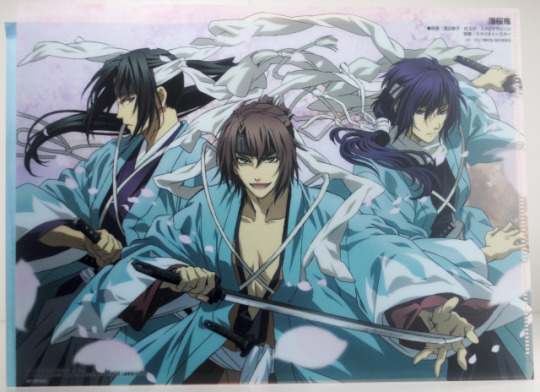
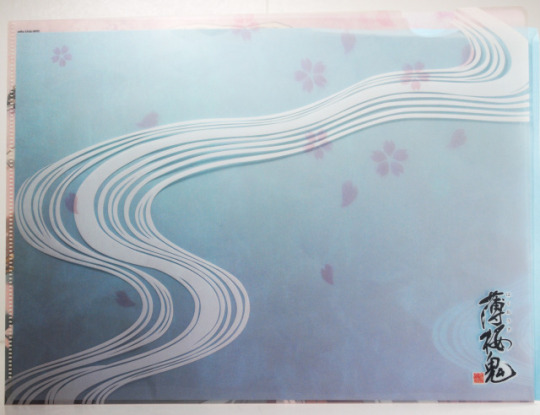
Hakuouki: Saito, Okita & Hijikata - Animedia Clear File
Size:A4
Price: 5€/ 10 USD
(FREE STANDARD SHIPPING)
Units Available: 1
(Send us a message or comment if you’re interested)
#hakuouki#Hajime Saitou#saito hajime#Toshizo Hijikata#Hijikata Toshizou#okita souji#souji okita#shouji okita#animedia#Hakuouki Hekketsuroku#hakuouki shinsengumi kitan#shinsengumi#bakumatsu shinsengumi#otome#otaku#weeb#anime men#anime man#anime boys#anime boy#ikemen#kawaii#cute#clearfiles#oneeesanmarket#all products#seiyuus#seiyuu
2 notes
·
View notes
Text

Happy Pants Day 2024
16 notes
·
View notes
Text
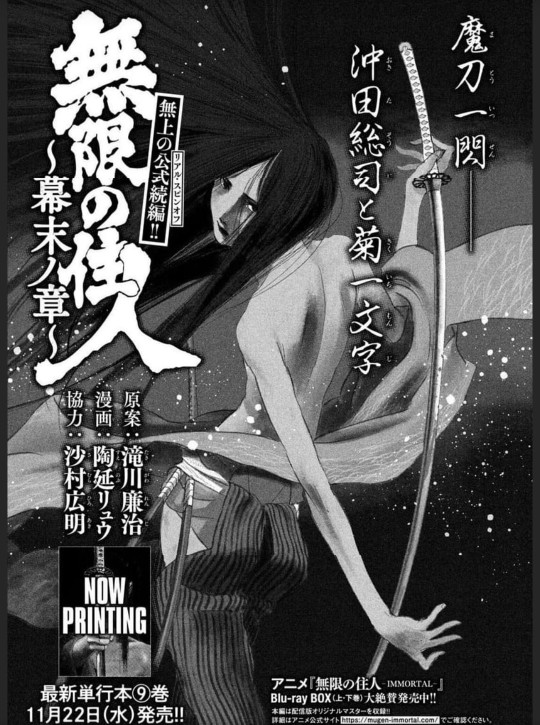
3 notes
·
View notes
Video
youtube
Like a Dragon: Ishin! - State of Play Sep 2022 Announcement Trailer | PS5
Yakuza's 2014 spinoff game Ryu ga Gotoku Ishin is getting released for the first time outside of Japan with a full remake in “Like a Dragon: Ishin”.
Ishin brings familiar and new characters to 1860s Kyo, a fictional version of Kyoto that explores the end of the samurai era. Yakuza protagonist Kazuma Kiryu takes on the role of Sakamoto Ryoma.
Sakamoto Ryoma is based on the actual historical figure of the same name, who participated in the overthrowing of the Tokugawa Shogunate during Bakumatsu triggering the Boshin War.
Looking through the list of characters of Ryu ga Gotoku Ishin, I noticed two familiar historical characters from films that I watched.
Saito Hajime, the captain of the Shinsengumi.

His character was played by Yôsuke Eguchi in Rurouni Kenshin.

Takechi Hanpeita, leader of the "Sonnō jōi" movement.

His character was played by Hayato Ichihara in Samurai Sensei.

#yakuza#like a dragon ishin#ryu ga gotoku ishin#kazuma kiryu#sakamoto ryoma#bakumatsu#boshin war#tokugawa shogunate#japan#saito hajime#shinsengumi#yosuke eguchi#rurouni kenshin#takechi hanpeita#hayato ichihara#samurai sensei#samurai#ronin#sega#game
16 notes
·
View notes
Photo
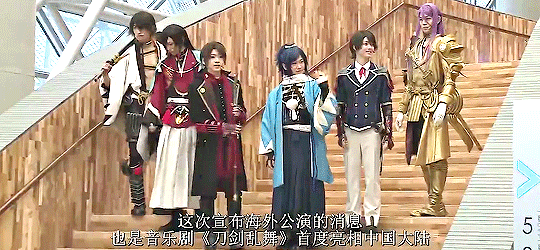
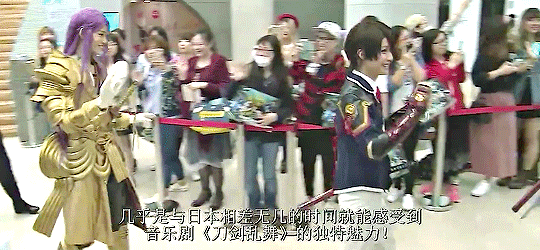
#shanghai again#tkrb#toumyu#musical touken ranbu#kashuu kiyomitsu#yamatonokami yasusada#izuminokami kanesada#horikawa kunihiro#hachisuka kotetsu#nagasone kotetsu#satou ryuuji#torigoe yuuki#arisawa shoutarou#ogoe yuuki#takahashi kensuke#imari yuu#bakumatsu tenrouden#team shinsengumi with hachisuka kotetsu#chi gifs
29 notes
·
View notes
Text



The first meeting of Okita and Kondo from Kaze Hikaru by Taeko Watanabe, ch. 35.
#there are suprisingly few panels from kaze hikaru on tumblr and i think the situation should be improved somewhat#bakumatsu#kaze hikaru#okita souji#kondo isami#Taeko Watanabe#shinsengumi#manga#漫画#読んでいます♪#幕末
20 notes
·
View notes